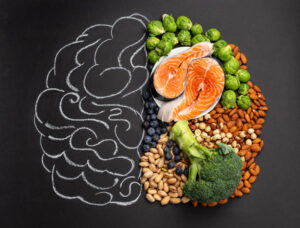Imagine a world where the food on your plate not only nourishes your body but also protects the environment and respects the lives of animals. What if changing what you eat could reshape your health and the way you connect with nature? This is the promise of a vegan diet, a lifestyle that excludes all animal products—meat, dairy, eggs, and even honey—in favor of plant-based foods.
In recent years, veganism has exploded in popularity. What was once seen as a fringe movement has now entered the mainstream. Whether for health reasons, ethical concerns, or environmental responsibility, more and more people are embracing this way of eating. Grocery stores stock shelves with plant-based alternatives, restaurants offer vegan menus, and documentaries are shining a light on the benefits of plant-based living. So, what exactly is a vegan diet, and why is it capturing the attention of so many? Let’s dive into what it’s all about.
History and Origins of Veganism
The roots of veganism run deep, tracing back to ancient civilizations that advocated for compassion toward animals. Early philosophers like Pythagoras in ancient Greece encouraged diets free from animal flesh, rooted in the belief that all living beings were connected and deserved respect. However, it wasn’t until the mid-20th century that veganism, as we know it today, took shape.
The term “vegan” was coined in 1944 by Donald Watson, a British woodworker and animal rights advocate, who sought to distinguish between vegetarians who consumed dairy and eggs and those who abstained from all animal products entirely. Alongside Watson, a small group of like-minded individuals founded the Vegan Society in the UK, which laid the foundation for the philosophy of veganism—not just as a diet but as a lifestyle rejecting animal exploitation in all forms, from food to clothing.
Early advocates like Watson viewed veganism primarily through the lens of animal rights, aiming to create a society where animals were not used as commodities. Over the decades, the movement grew, especially as research highlighted the environmental and health benefits of a plant-based diet. In the 1970s and 1980s, concerns about industrial farming practices and the growing body of evidence linking animal-based diets to chronic diseases fueled veganism’s expansion.
Today, veganism has evolved beyond its early interpretations. While ethical concerns about animal welfare remain at its core, modern veganism also encompasses environmental sustainability and personal well-being. People are drawn to veganism not only to avoid harm to animals but also to reduce their carbon footprint, protect natural resources, and pursue a healthier lifestyle. The movement has become more accessible and widespread, supported by advancements in food technology and an increasing awareness of global issues.
This evolution has led to a broader and more flexible interpretation of what it means to be vegan. Whereas early vegans might have relied on simple, whole foods, today’s vegans have access to plenty of plant-based meats, dairy-free cheeses, and egg substitutes. Yet, despite these changes, the core of veganism remains the same. It emphasizes a commitment to living in a way that minimizes harm to animals and the planet.
Core Principles of a Vegan Diet
At its heart, a vegan diet is defined by what it excludes and what it embraces. The key principle is the complete elimination of all animal products—this means no meat, no dairy, no eggs, and no honey. The idea is to avoid not only animal flesh but also any food or ingredient derived from animals in any form.
Instead, a vegan diet revolves around plant-based foods. Think fresh fruits, colorful vegetables, hearty legumes, grains, nuts, and seeds. These form the foundation of meals, providing all the essential nutrients while avoiding animal involvement. It’s about tapping into the natural abundance the plant world offers, from protein-packed lentils to omega-rich chia seeds.
Now, it’s important to distinguish veganism from other plant-based diets. While vegetarians avoid meat, they still consume dairy and eggs. Pescatarians, on the other hand, eat fish and seafood but no other meat. Flexitarians might eat predominantly plant-based but occasionally include animal products. The vegan diet takes it a step further, rejecting all forms of animal exploitation in food, making it the most restrictive but also the most ethically and environmentally driven of these dietary choices.
What sets veganism apart isn’t just the food itself but the underlying philosophy: the desire to live in a way that causes the least harm to animals and minimizes environmental impact. Whether for the animals, health, or the planet, veganism is a commitment to plant-based living.
Types of Vegan Diets
While all vegan diets share the common foundation of excluding animal products, there are several ways people choose to approach a vegan lifestyle based on their health goals, personal preferences, or ethical motivations. Here are some of the main types of vegan meals:
1. Whole Food Vegan Diet
The whole-food vegan diet centers around unprocessed, natural plant foods. This means eating fruits, vegetables, legumes, whole grains, nuts, and seeds in their most natural forms. It avoids refined sugars, oils, and highly processed foods. Focus instead on nutrient-dense meals that provide essential vitamins, minerals, and fiber. Those following this approach often prioritize organic, seasonal produce and aim to eat foods as close to their natural state as possible. It’s about harnessing the full nutritional power of plants to fuel the body.
2. Raw Vegan Diet
Raw veganism takes things further, focusing on uncooked or minimally heated foods. The belief is that cooking destroys vital enzymes and nutrients, so raw vegans consume their food mostly in its natural, uncooked form. This includes raw fruits, vegetables, nuts, seeds, and sprouted grains or legumes. When foods are heated, it’s typically done at low temperatures, usually below 118°F (48°C), to preserve their nutritional integrity. It’s a diet rich in fresh, vibrant ingredients, but it can be challenging due to the lack of traditional cooked meals.
3. Junk Food Vegan Diet
On the opposite end of the spectrum is the junk food vegan diet, which focuses less on health and more on convenience. This diet includes processed vegan alternatives like plant-based burgers, vegan sausages, dairy-free cheeses, chips, and even vegan sweets and desserts. While these foods are technically vegan, they can be high in fats, sugars, and sodium, offering little nutrients. This style of veganism caters to those who enjoy the taste and texture of traditional comfort foods without animal products, but it’s not necessarily focused on long-term health benefits.
4. High-Carb, Low-Fat Vegan Diet
This vegan diet is built around high carbohydrate intake from whole plant sources, like fruits, vegetables, grains, and legumes, while minimizing fats, even plant-based ones like oils, avocados, and nuts. Advocates of this diet believe in the energy provided by carbs, especially from whole, unrefined sources. Think rice, potatoes, oats, bananas, and other starchy foods.
Each offers a different approach to veganism, allowing people to tailor their plant-based lifestyle based on what works best for their body, ethics, or goals. Whether it’s prioritizing nutrient density, convenience, or a raw, natural approach, there’s no one-size-fits-all to veganism.
Conclusion
Adopting a vegan diet offers a myriad of benefits that can positively impact your health, contribute to ethical animal treatment, and help protect our planet. From improving heart health and aiding in weight management to reducing the risk of chronic diseases, the health advantages are substantial. Ethically, a vegan lifestyle aligns with compassion for animals, promoting humane treatment and the avoidance of animal suffering. Environmentally, plant-based eating significantly lowers your carbon footprint, conserves water, and reduces deforestation, all contributing to a more sustainable future.
As you consider the possibility of incorporating veganism into your life, remember that this journey can take many forms. Whether you try it for a day, a month, or embrace it for a lifetime, every small step you take contributes to a larger positive change.
So, are you ready to make a change for yourself, the animals, and the planet? Your journey into the vibrant world of plant-based living awaits!
Frequently Asked Questions (FAQ)
1. Is a vegan diet suitable for children and pregnant women?
Yes, a vegan diet can be suitable for children and pregnant women, provided it is well-planned and includes a variety of nutrient-rich foods. Essential nutrients like protein, calcium, iron, and vitamin B12 should be carefully monitored, and it may be beneficial to consult with a healthcare professional or a registered dietitian to ensure all dietary needs are met.
2. Can athletes thrive on a vegan diet?
Absolutely! Many athletes thrive on a vegan diet, benefiting from increased energy levels, improved recovery times, and enhanced overall health. With proper meal planning, they can easily meet their protein, carbohydrate, and micronutrient needs.
3. What are the best substitutes for dairy and eggs?
For dairy, there are numerous alternatives available, such as almond, soy, oat, and coconut milk, as well as vegan cheeses and yogurt made from nuts or soy. When it comes to eggs, there are various substitutes, depending on the recipe.
4. Will I get enough protein on a vegan diet?
Yes, it is possible to meet your protein needs on a vegan diet. Foods such as lentils, chickpeas, tofu, tempeh, quinoa, and several nuts and seeds are all excellent sources of plant-based protein. By incorporating a diverse range of these foods into your meals, you can easily achieve adequate protein intake.
5. How can I get all the essential nutrients on a vegan diet?
To ensure you receive all essential nutrients on a vegan diet, focus on variety and balance. Include a wide range of fruits, vegetables, whole grains, legumes, nuts, and seeds. Pay special attention to nutrients that may require extra care, such as vitamin B12, iron, calcium, and omega-3 fatty acids.
6. What are the environmental benefits of a vegan diet?
A vegan diet significantly reduces your carbon footprint and helps conserve natural resources. Plant-based diets require less water and land compared to meat-based diets and contribute to lower greenhouse gas emissions. By choosing veganism, you play a vital role in promoting sustainability and mitigating climate change.
7. How can I handle social situations as a new vegan?
Navigating social situations can be challenging, but communication is key. Let friends and family know about your dietary choices, and consider bringing a vegan dish to gatherings. Researching restaurant menus ahead of time can also help you find suitable options when dining out. Most importantly, stay confident in your choice and seek out supportive environments.
8. Is it difficult to find vegan options when dining out?
While it can vary by location, many restaurants now offer vegan options or are willing to accommodate dietary requests. In larger cities, you may find dedicated vegan restaurants, while many mainstream eateries provide plant-based dishes. Apps like HappyCow can help you find vegan-friendly restaurants nearby, making it easier to enjoy dining out while staying true to your vegan lifestyle.







